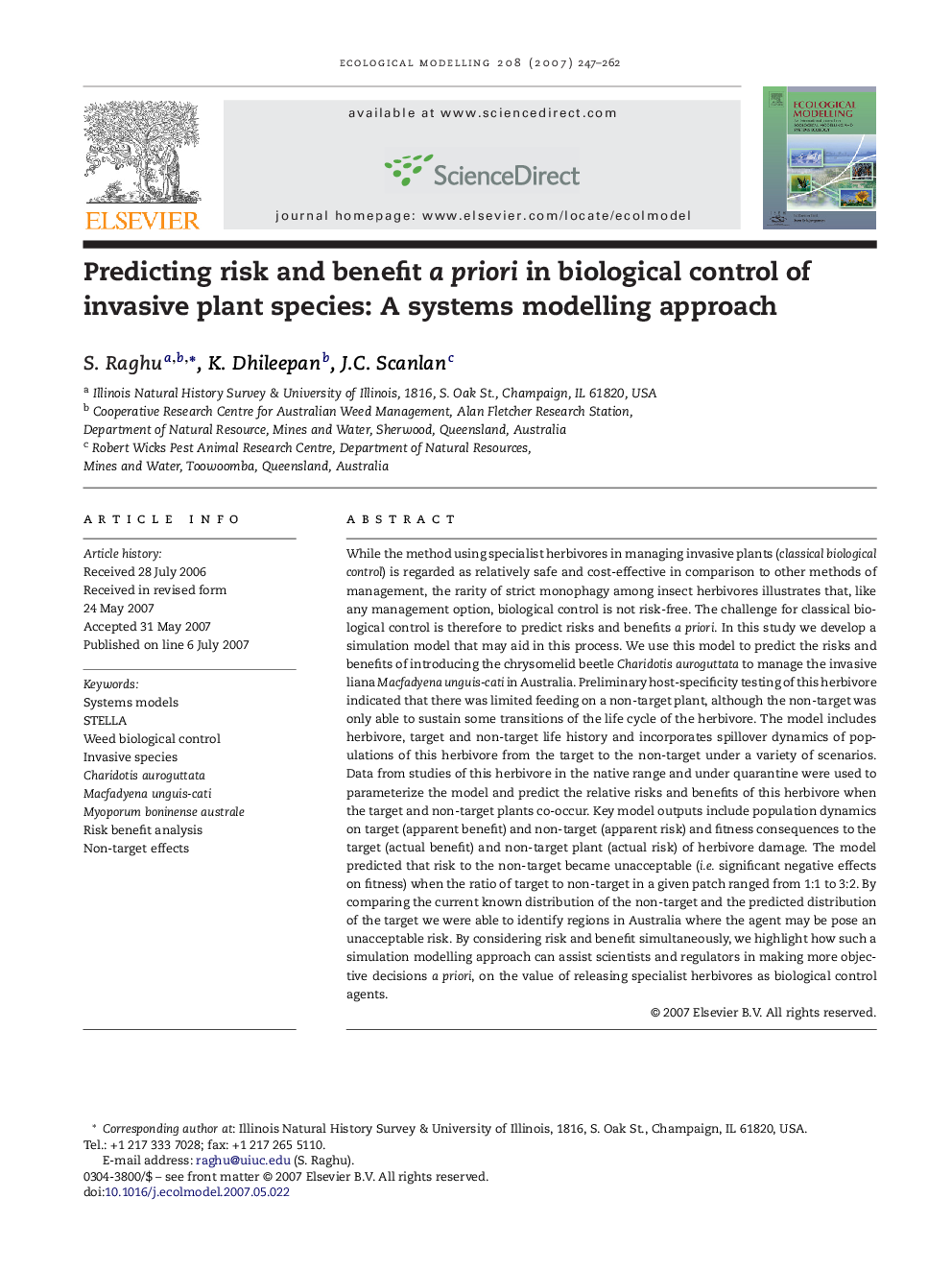| کد مقاله | کد نشریه | سال انتشار | مقاله انگلیسی | نسخه تمام متن |
|---|---|---|---|---|
| 4378413 | 1617542 | 2007 | 16 صفحه PDF | دانلود رایگان |

While the method using specialist herbivores in managing invasive plants (classical biological control) is regarded as relatively safe and cost-effective in comparison to other methods of management, the rarity of strict monophagy among insect herbivores illustrates that, like any management option, biological control is not risk-free. The challenge for classical biological control is therefore to predict risks and benefits a priori. In this study we develop a simulation model that may aid in this process. We use this model to predict the risks and benefits of introducing the chrysomelid beetle Charidotis auroguttata to manage the invasive liana Macfadyena unguis-cati in Australia. Preliminary host-specificity testing of this herbivore indicated that there was limited feeding on a non-target plant, although the non-target was only able to sustain some transitions of the life cycle of the herbivore. The model includes herbivore, target and non-target life history and incorporates spillover dynamics of populations of this herbivore from the target to the non-target under a variety of scenarios. Data from studies of this herbivore in the native range and under quarantine were used to parameterize the model and predict the relative risks and benefits of this herbivore when the target and non-target plants co-occur. Key model outputs include population dynamics on target (apparent benefit) and non-target (apparent risk) and fitness consequences to the target (actual benefit) and non-target plant (actual risk) of herbivore damage. The model predicted that risk to the non-target became unacceptable (i.e. significant negative effects on fitness) when the ratio of target to non-target in a given patch ranged from 1:1 to 3:2. By comparing the current known distribution of the non-target and the predicted distribution of the target we were able to identify regions in Australia where the agent may be pose an unacceptable risk. By considering risk and benefit simultaneously, we highlight how such a simulation modelling approach can assist scientists and regulators in making more objective decisions a priori, on the value of releasing specialist herbivores as biological control agents.
Journal: Ecological Modelling - Volume 208, Issues 2–4, 10 November 2007, Pages 247–262